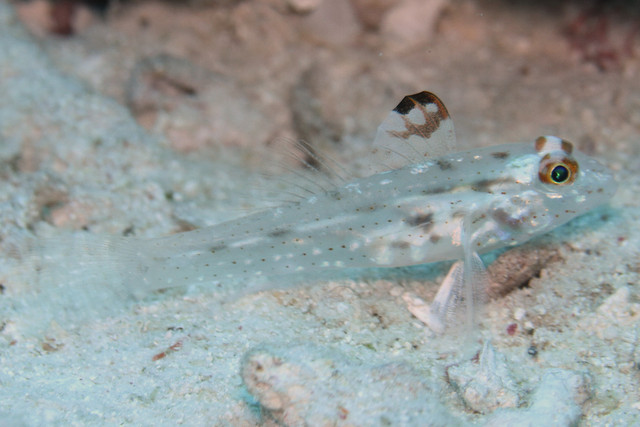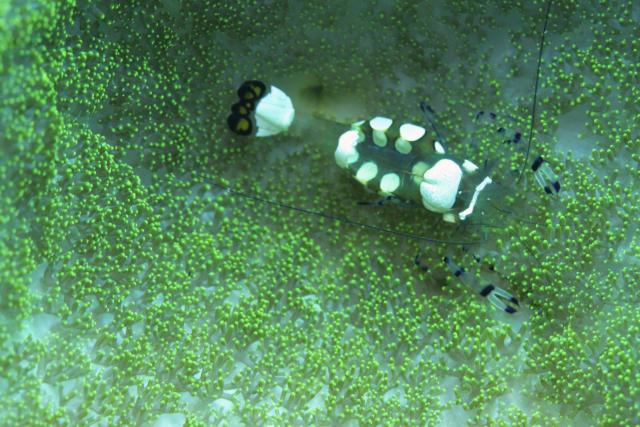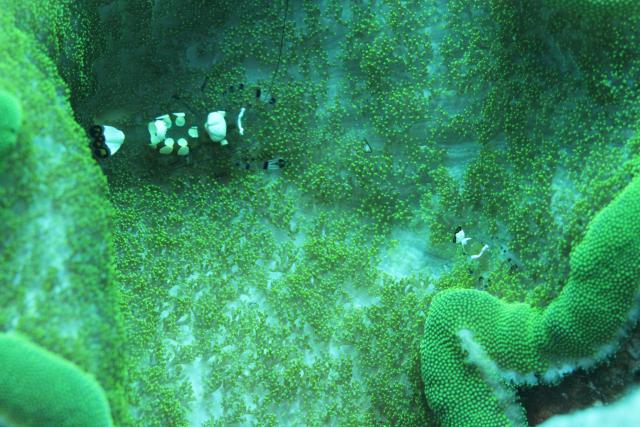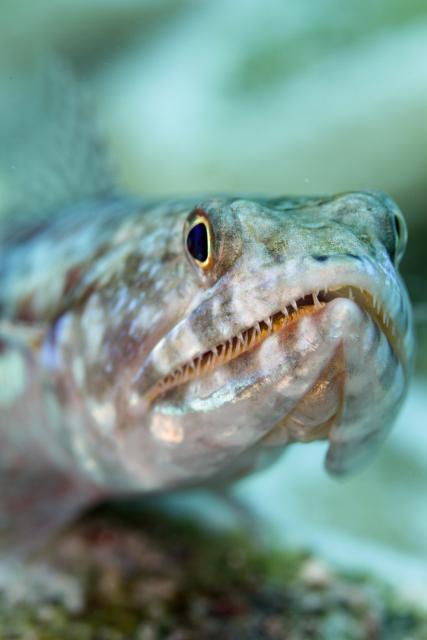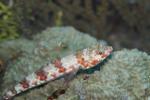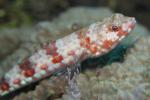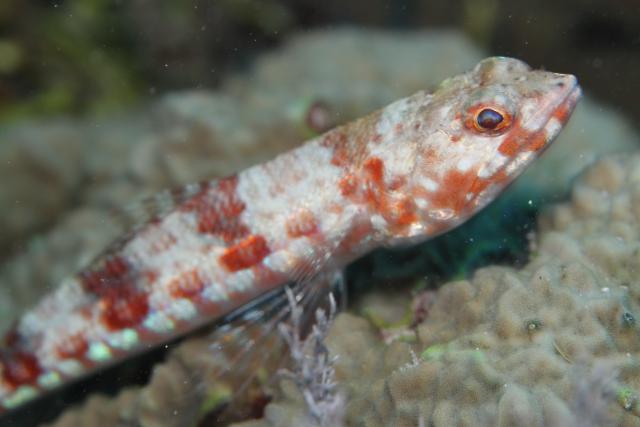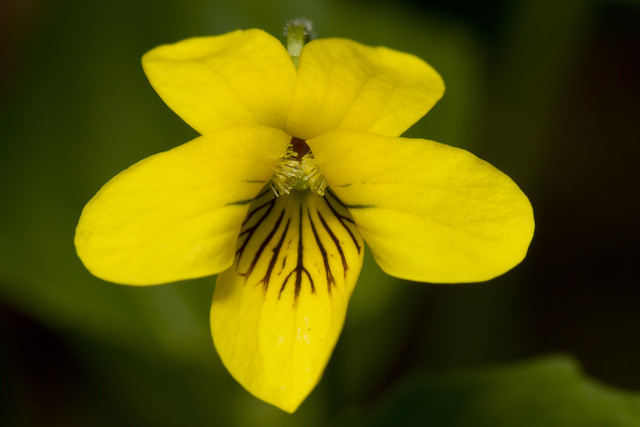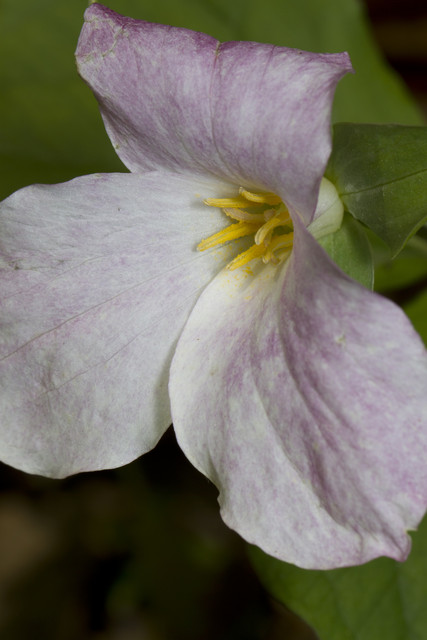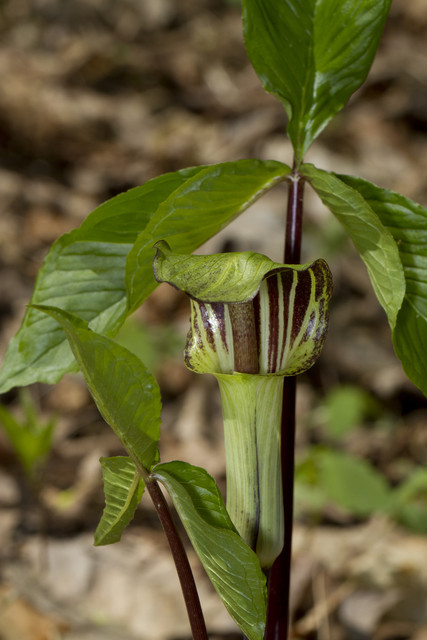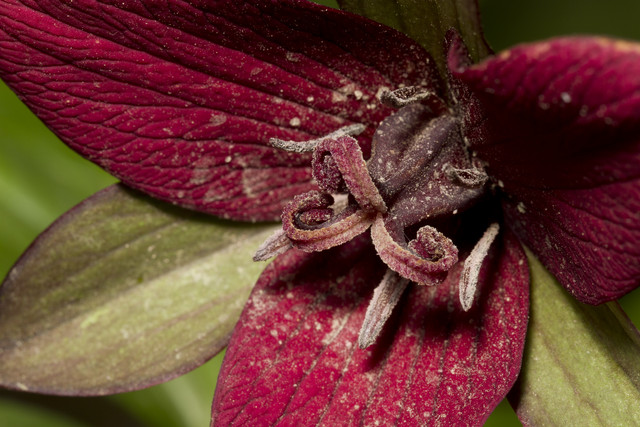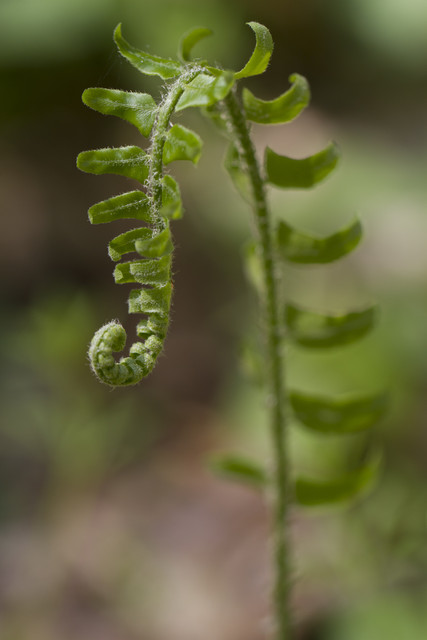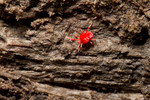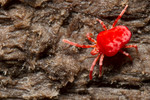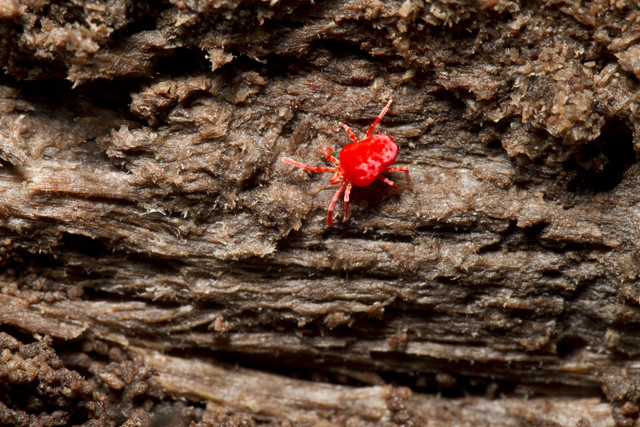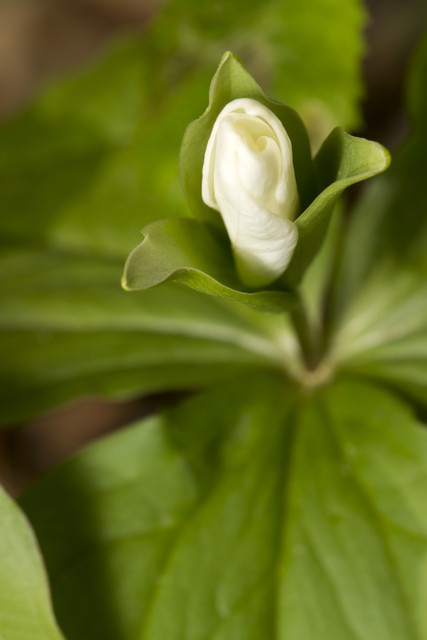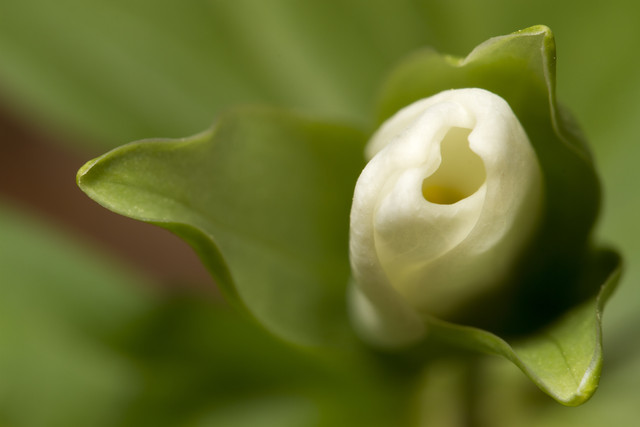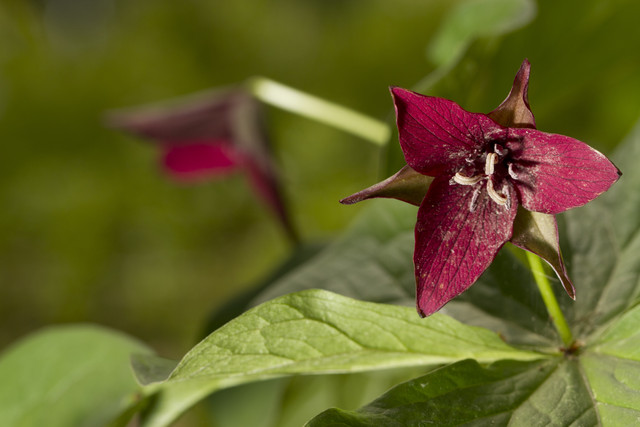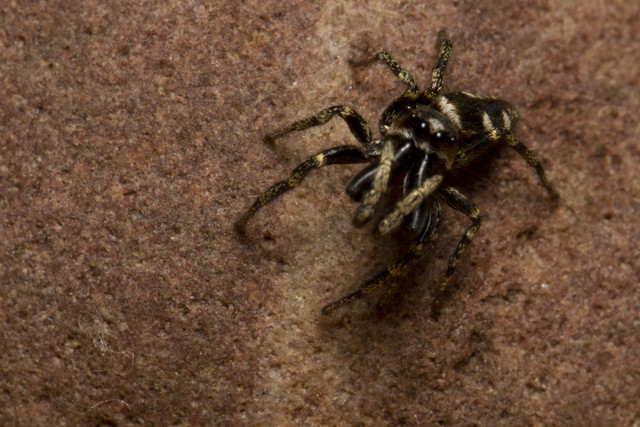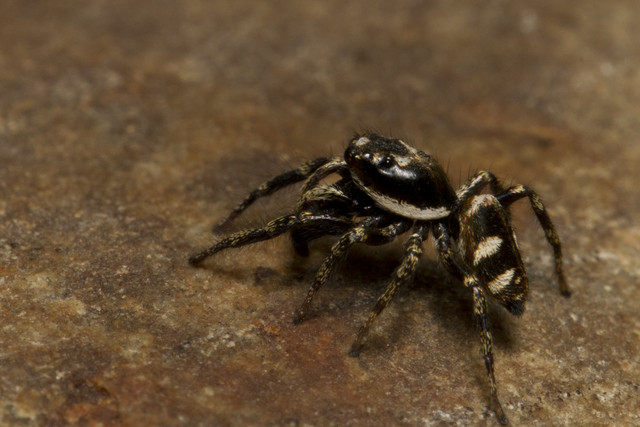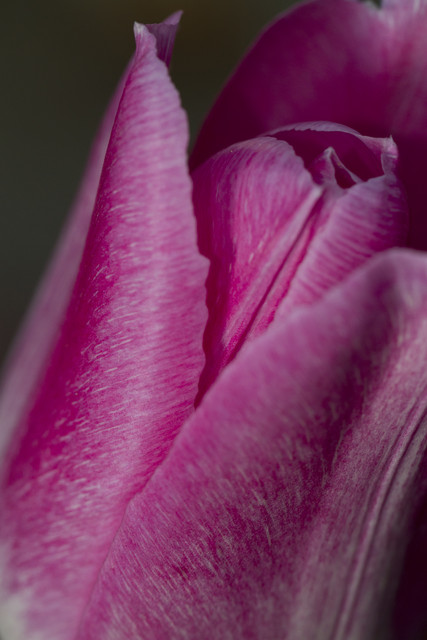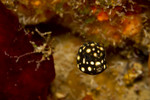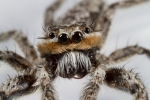macro
Wakatobi: Signalfin Goby
ktuli — Tue, 05/17/2011 - 20:10
I was flipping through my Wakatobi shots again tonight, and I stumbled upon this one of a Signalfin Goby (Coryphopterus signipinnis).
These guys are fairly tiny little fish - maxing out at about 1.25" - and are extremely skittish. To be honest, I don't even remember taking this photo.
Technical Data: Canon EOS 7D, Canon EF 100mm f/2.8L Macro IS USM, 1/50th sec at f/8. Image Stabilization on. ISO 400 (Auto). Ikelite Housing and Port with Ikelite 161 Strobe in TTL Mode. Removed Color Cast, Adjust Brightness -50, Contrast +10 in Photoshop Elements 8.0 (mouseover for original).
I know the shot is extremely over-exposed with the semi-translucent body of the fish and the bright white sand of the reef, even with having pulled the brightness back in Photoshop, but I am pretty pleased with the crisp focus and clarity (something I struggled with on this trip) - especially for such a small skittish subject.
Drop me a line and let me know what you think of the shot, and of the post production work.
- Bill
Wakatobi: Peacock-tail Anemone Shrimp
ktuli — Sat, 05/14/2011 - 12:44
Sorry - I don't even remember what all I did this week that I didn't get any new posts in, but here's another one from the Wakatobi trip.
I know I shared a slightly different version of this shrimp before, but I figured I would also share this version (which coincidentally is hanging from our walls in an 8x10" format) that has had a little post production work done on it.
Anya spotted this little girl (yes, I know it is a female) early in the one dive, but for whatever reason, no one else in the group got to see it. As soon as she pointed it out to me (and I figured out what she was pointing to!) I moved in and rattled off a ton of shots.
Technical Data: Canon EOS 7D, Canon EF 100mm f/2.8L Macro IS USM, 1/100th sec at f/11.3. Image Stabilization on. ISO 3200 (Auto). Ikelite Housing and Port with Ikelite 161 Strobe in TTL Mode. Removed Color Cast in Photoshop Elements 8.0 (mouseover for original).
The Peacock-tail Anemone Shrimp (Periclimenes brevicarpalis) is only about 1.5" long and lives specifically on carpet anemones where in exchange for keeping the anemone free of parasites and potentially warning off some predators, it receives protection and free meals from the scraps the anemone misses. As I said, I know this is a female because they are much larger than the males - as you can see in the photo below (the male is towards the bottom right).
Technical Data: Canon EOS 7D, Canon EF 100mm f/2.8L Macro IS USM, 1/170th sec at f/11.3. Image Stabilization on. ISO 2500 (Auto). Ikelite Housing and Port with Ikelite 161 Strobe in TTL Mode. No post production.
Unfortunately, this was the only shrimp we saw like this, and any others we saw I didn't manage to get good photos of. Which is a shame, really, because I am very fond of shrimp - especially these tropical ornamental kinds.
- Bill
Wakatobi: Reef Lizardfish
ktuli — Mon, 05/09/2011 - 19:02
I've found myself thinking back to my Wakatobi trip a lot recently. I really long to be slowly sinking below the surface of some crystal clear blue water, camera in hand, ready to go find some interesting reef inhabitant.
We saw plenty of these Reef Lizardfish (Synodus variegatus) on almost every dive. Most were in the range of 8-10 inches in length and would sit motionless on top of outcroppings. In general, they would let you approach within a few feet of them before they darted off to hide, so getting relatively close like this was not too challenging as long as you moved in slowly.
As you can see, they had tons of sharp little curved teeth that despite being tiny were kind of impressively intimidating. That, coupled with their jaw structure illustrates that they are an ambush predator. They lie still waiting for an unsuspecting fish to swim a little too close, then - *WHAM!* - lunge forward with that large mouth, using those curved teeth (much like a lizard) to keep their prey from escaping.
Cool little fish.
Technical Data: Canon EOS 7D, Canon EF 100mm f/2.8L Macro IS USM, 1/170th sec at f/8. Image Stabilization on. ISO 500 (Auto). Ikelite Housing and Port with Ikelite 161 Strobe in TTL Mode. Auto-smartfix and Removed Color Cast in Photoshop Elements 8.0 (mouseover for original)
Why This Photo: As I said, I was quite impressed with those teeth, and they help to give the fish its lizard like namesake, so I wanted to capture a shot that showed those teeth in particular.
What Works: The focus is right on the fish's eye, and more importantly on those razor sharp teeth. The varying diagonal lines (the reef shelf, the lizard fish's back, its jawline, etc) continuously lead the viewer's eyes through the frame and back again.
What Doesn't Work: The aperture could have been stopped down just a little more (perhaps to f/11) for more depth of field to show more of the fish in focus - though just enough to keep the head in focus to avoid there being distracting elements to take away from the teeth being the main point of interest. Also, potentially a horizontal format would have worked better for this long fish.
As a bonus, I have several other shots of these fish to share... though, for some reason, I liked to cut off their tails from the shots. I don't know why, but looking through all of my lizardfish shots, they are pretty much all like that. Guess I'll have to go back and try it again... ;) Just mouseover the thumbnail to display the larger version.
And as you can see, I also apparently only approach these fish from their right sides... Weird. Anyway, what I was trying to illustrate was the variety in their colors... ranging from light tan, to dark brown, and even to a bright red.
Like I said, cool little fish.
- Bill
Trillium Trails: Assortment
ktuli — Fri, 05/06/2011 - 20:51
Ok - time to just share an assortment... enjoy.
I probably have one or two more shots to share from this set, but I may take a little break to share some other stuff. Either way, stay tuned.
- Bill
Trillium Trails: Uncurling Fern
ktuli — Thu, 05/05/2011 - 19:50
Wild flowers aren't the only things popping up now that it is spring...
I really like ferns. I don't know why, I just do. Maybe it is the way a bunch of them make a forest feel prehistoric. Maybe it is the many different varieties of leaf patterns there are. Or maybe it is the way they unfurl and uncurl those fiddleheads.
I always find them difficult to photograph though.
Technical Data: Canon EOS 7D, Canon EF 100mm f/2.8L Macro IS USM, 1/800 sec at f/2.8. Image Stabilization on. ISO 200. RAW processing and cropped in Adobe Camera Raw. Trillium Trails, Fox Chapel, PA.
Why This Photo: When I found this fern unfurling in such an interesting manner, I figured it was worth spending some time with it. The vertical orientation was fairly obvious, and a shallow depth of field was necessary to eliminate a rather cluttered background.
What Works: The wide aperture at f/2.8 produces that shallow depth of field to keep the background completely blurred and reduce distractions. The path of the fern stem through the shot follows up one third and back down the other, providing a nice balance to the frame.
What Doesn't Work: The varying bright and dark background - though sufficiently blurred - is still a little distracting (perhaps I should have still used the flash to brighten up the foreground a bit and thus under-expose the background to darken it). The depth of field is actually a tad too shallow as the tip (and most curled part) of the fern is slightly out of focus.
Despite the downfalls, I think the shot is still rather pleasing. What do you think?
- Bill
Trillium Trails: Red Velvet Mite
ktuli — Tue, 05/03/2011 - 20:41
As I was walking along, I was on the lookout for any bugs. At one point, I looked at this decaying log and saw this absolutely tiny bright red dot crawling about. I got down closer and noticed it was a bug of some sort - it had eight legs but didn't look like a spider.
I took maybe half a dozen shots, and ended up only keeping one (others were in focus and decent shots, but the subject was not facing the right way or didn't line up as well as this shot).
It turns out, this is probably a Red Velvet Mite. When I say it was tiny, I mean it. If my measurements and math are correct (using the Exit data saying that my subject distance was 0.29m which would be 1:1 magnification on my 100 f/2.8L lens), it was about 2.5-3mm long.
Below are the original and a cropped version. If you look closely, you can see an additional even tinier arthropod a small distance above the mite's front right leg (in the cropped version, it is just below the top edge of the frame).
Technical Data: Canon EOS 7D, Canon EF 100mm f/2.8L Macro IS USM, 1/250 sec at f/11. Canon Speedlight 580EX II flash in auto mode and wireless control. Image Stabilization on. ISO 200. RAW processing and cropped in Adobe Camera Raw. Trillium Trails, Fox Chapel, PA.
Sorry if that freaked anybody out, but I really like the challenge of working on such tiny subjects.
- Bill
Trillium Trails: White Trillium Bud
ktuli — Mon, 05/02/2011 - 20:14
When we visited the park the other day, almost every trillium in the area was fully bloomed, so when we spotted this bud, it made for a nice alternative to the rest of the shots I was getting. I (intelligently) shot both horizontal and vertical views of the bud, so we'll review both of them today.
We'll start with the vertical shot. Here I wanted to use the larger leaves to provide a nice background, but to still maintain some definition of their patterns, particularly on the one at the bottom of the frame.
Technical Data: Canon EOS 7D, Canon EF 100mm f/2.8L Macro IS USM, 1/250 sec at f/11. Canon Speedlight 580EX II flash in auto mode and wireless control. Image Stabilization on. ISO 200. RAW processing and cropped in Adobe Camera Raw. Trillium Trails, Fox Chapel, PA.
Why This Photo: Given a partially open bud in seas of trilliums in full bloom (tune in tomorrow for more on that), I simply couldn't pass up the opportunity. The initial shape of the bud with the petals wound together in a rather tall vertical bud to me warranted the vertical format.
What Works: The exposure is well balanced - keeping detail even in the white petals of the bud, and the focus is sharp at the closest edges of the flower and surrounding leaves. The depth of field with an aperture of f/11 is just barely enough to keep the bud in clarity, but blurs everything else softly - though maintaining enough clarity to show the vein pattern in the front leaf.
What Doesn't Work: The brown ground showing between the leaves is somewhat distracting, but not nearly as bad as the stray leaf from a neighboring plant in the bottom left corner. The bruise on the leaf to the upper left is a little distracting as well, and a slightly different angle may have hid that behind the flower. If that had been properly hidden, more depth of field might have worked better to show the leaf patterns better.
Before we move on to the horizontal photo, there are a couple items I want to point out.
First, when people see a trillium for the first time, they often assume that the name comes from the three petals to the flower. Which is partially correct, but if you notice, everything on this plant is in sets of threes. Often times the petals of the flowers are so spectacular that they over shadow the fact that the leaves enclosing the bud until it blooms are in a set of three, as are the leaves further down the stem. It is this repeated sets of three pattern that gives the plant its name, and I feel these shots with the flower still closed help to illustrate that a little better.
Another item of note between these two photos is how focal distance - the distance from the camera to the subject - affects depth of field. All other factors being equal, the further you are from a subject, the greater your depth of field. In these examples, the vertical shot has a focal distance of 0.39 meters, whereas the horizontal is only 0.30 meters - a difference of only 0.09 meters or just over 3.5 inches. However, where the vertical shot is able to keep the entire flower bud in clarity, the horizontal shot is barely able to show half of the bud before the depth of field causes it to blur. In all fairness though, there is one other factor at work here, and that is a slightly different angle. The vertical shot uses a more glancing angle to keep more of the bud in the crisp depth of field, whereas the horizontal shot exaggerates the depth of field by being shot straight on. Still interesting to see how a slight reposition of the camera can have such a dramatic effect with the exact same settings.
Anyway... on to the horizontal shot.
Technical Data: Canon EOS 7D, Canon EF 100mm f/2.8L Macro IS USM, 1/250 sec at f/11. Canon Speedlight 580EX II flash in auto mode and wireless control. Image Stabilization on. ISO 200. RAW processing and cropped in Adobe Camera Raw. Trillium Trails, Fox Chapel, PA.
Why This Photo: After shooting the bud in the vertical format, I felt I still wanted to work with this subject a bit more, and thought I would try a horizontal. To eliminate some of the distractions that the same positioning as the vertical would have provided, I moved in closer and took a more intimate view of the bud.
What Works: Again, the focus is sharp right on the closest edges of the bud and leaves, and this time the closer perspective and straight angle reduces the depth of field down to its shortest amount for this aperture setting. Doing so reduces distractions and places all of the viewers attention right on the point of focus. The one leaf opening slightly more than the others perfectly lent itself to the off-set positioning, and this time, the brown ground showing through the further leaves helps to delineate things and avoid everything blurring together. Top it all off with the slight yellow glow of the pollen inside the bud.
What Doesn't Work: Honestly, I feel hard pressed to find anything wrong with this shot. The simplicity of the macro shot helps to reduce distracting issues. Perhaps the two yellowish bands directly below the bud are distracting, but that's really nit-picking.
I don't know, maybe I'm being a little over-protective of my own image, or I'm just missing the problems with it. Please, if you spot anything you don't like about it, drop me a comment and let me know. I'm always open to constructive criticism.
With how fleeting spring wild flowers are, it will probably be next year before I could even attempt to reshoot this, which adds to the challenge. Capturing this atypical view of such an iconic Pennsylvania flower gives a fresh look at something that quite often gets overlooked by many despite its absolute stunning beauty.
Be sure to stop back tomorrow as I will be sharing shots from this little outing all week (as long as I can keep myself motivated to type up the posts each night!). Thanks for dropping in, and feel free to leave a comment with your thoughts or critiques.
- Bill
Trillium Trails: Red Trillium (part 1)
ktuli — Mon, 05/02/2011 - 07:15
Ok - sorry, can't give this photo a full critique (took me a little too long to process the bunch last night, so just doing a quick post this morning).
For those that were on the trip, hopefully you found these (or other) red trillium (at least I think they are reds, I'll have to do a detailed species check later). We found them at the far end of the one trail, and by the time we made it back to the parking area, everyone had gone, so we couldn't share our find.
Technical Data: Canon EOS 7D, Canon EF 100mm f/2.8L Macro IS USM, 1/250 sec at f/8. Canon Speedlight 580EX II flash in auto mode and wireless control. Image Stabilization on. ISO 200. RAW processing and cropped in Adobe Camera Raw. Trillium Trails, Fox Chapel, PA.
Stop back tomorrow as I'll try getting to a more structured post.
- Bill
Flashy Jumping Spider
ktuli — Fri, 04/29/2011 - 19:42
I found this little guy at work today. No lie! He was crawling along my desk, so I scooped him up in a small plastic container I keep at work for just these purposes (yeah, I know - I'm a little bit weird like that). I brought him home, and tried setting up to get some shots of him. He doesn't like to sit still, so I only managed two decent ones before I decided to let him go back to sleep for the night. I might try a couple more tomorrow and then release him when it is nice and warm outside.
Technical Data: Canon EOS 7D, Canon EF 100mm f/2.8L Macro IS USM, 1/200 sec at f/16. Canon Speedlight 580EX II flash in auto mode and wireless control. Image Stabilization on. ISO 400. RAW processing and cropped in Adobe Camera Raw.
Technical Data: Canon EOS 7D, Canon EF 100mm f/2.8L Macro IS USM, 1/200 sec at f/16. Canon Speedlight 580EX II flash in auto mode and wireless control. Image Stabilization on. ISO 400. RAW processing and cropped in Adobe Camera Raw.
Both shots are just a tad off on their focus. The first one would have done better to be focused on his face, but unfortunately, I was not expecting him to twist towards me like that and was focused more on his back. Like I said - he just didn't want to sit still.
Oh well, I'll keep trying.
- Bill
Pink Tulip Close-Up
ktuli — Thu, 04/28/2011 - 21:46
Sorry, don't feel much like typing tonight, so just going to share another macro photo with flash... unfortunately, there aren't many bugs out yet, so we're still working on the flowers.
Technical Data: Canon EOS 7D, Canon EF 100mm f/2.8L Macro IS USM, 1/250 sec at f/5. Canon Speedlight 580EX II flash in auto mode and wireless control. Image Stabilization on. ISO 400. RAW processing in Adobe Camera Raw.
This weekend I am heading out to hopefully get some shots of trillium. But secretly I'm hoping to find some bugs too!
Stay tuned.
- Bill

